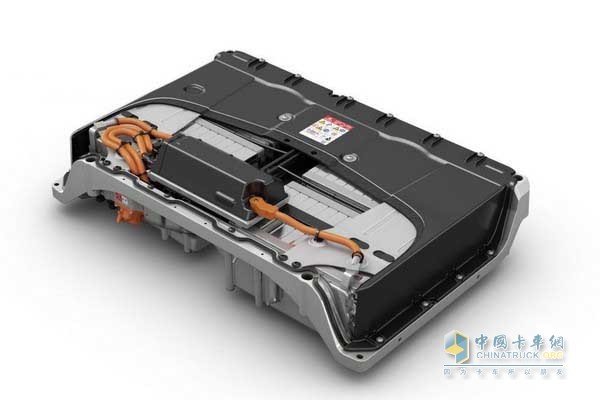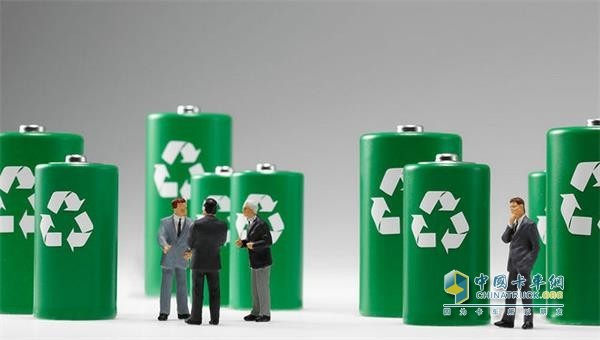The sales of new energy vehicle companies have always depended on the output of battery companies. It is also based on this. In recent years, along with the explosive growth of new energy vehicles, the power battery capacity has also rapidly increased. However, the development of the power battery industry is small, scattered, and chaotic, and the problem of “insufficient high-end capacity and low-end excess capacity†has become even more prominent. Especially in 2017, power battery manufacturers are suffering from pressure from both upstream and downstream ends: one side is the battery. The rising prices of raw materials, while subsidizing new energy vehicles. According to industry insiders, the power battery industry may enter a difficult time. Is this true? "Warning mechanism" fails to overcapacity Since 2015, the power battery has ushered in a large-scale expansion of production, such as the traditional equipment manufacturing companies, new energy car companies, Internet giants and other multi-channel capital competition layout, with a view to seize the opportunities in the high-speed development of the market. From the view of capacity expansion, as of the end of 2016, the new capacity of the power battery industry increased by nearly 35GWh compared to the same period, and the total volume was almost three times that of the full-year shipments two years ago. In 2016 alone, the capital invested in the field of power batteries has exceeded 100 billion yuan, which is just a microcosm of the “flying†production capacity in the field of power batteries. In the industry's view, if all these capacities are released, the power battery capacity will reach 170GWh/year. The analysis report from Industrial Securities shows that the demand for power batteries in China is about 28GWh in 2016, and it is expected that the demand for power batteries will exceed 90GWh by 2020. "If you look at the ratio of 1:10 for electric buses and electric passenger vehicles, 170Gwh can meet the total demand for an annual output of 500,000 electric buses and 5 million electric passenger cars." Professor at Tsinghua University Ouyang Minggao believes that the industry may reach capacity saturation in the next three to five years. Entering 2017, the pace of capacity expansion has not stopped, and companies that engage in power batteries have shown greater enthusiasm. According to reports, many power battery companies, including BYD, Tianjin Lishen, Waterma, Tianneng, Guoxuan Hi-tech, Yiwei Li-Neng, Nandu Power, Shanshangufen, Wanxiang A123, Yiwei Lithium, etc. Has or plans to launch a new production line. Obviously, according to the current situation, the growth rate of domestic power battery capacity reserves has far exceeded sales growth. Double pressure attack Matthew effect highlights At the beginning of 2017, new energy vehicles started the subsidy retreat mechanism, accounting down, the overall subsidy reduced by 40%. The subsidy for new energy vehicles has plummeted, and the cost pressure directly affects the power battery on the upstream industrial chain. In addition to under pressure from the lower car prices, the high prices of raw materials have made the situation of power battery companies even worse. Since the beginning of this year, raw material prices have remained high, and industry data shows that on May 18, 2017, the reference price for lithium carbonate was 140,000 yuan per ton, and the reference quote for metal cobalt was maintained at 367,000 yuan per ton, especially in the battery. The price of metallic cobalt, which is around %, has doubled over 2016. New energy car companies are generally strong propaganda, requiring power batteries to cut prices by 20% -30%. “Faced with the pressure to reduce costs, companies are mainly achieved by increasing energy density and economies of scale, as well as the compression of raw materials in all sectors. Profits are squeezed out.†Wu Hui, general manager of the Automobile Industry Research Center of the CCID Research Institute of the Ministry of Industry and Information Technology interviewed by the reporter Said. In early 2017, Miao Miao, minister of the Ministry of Industry and Information Technology, made a point of pain in the electric car hundred people’s conference. “We have not yet achieved a revolutionary breakthrough in the core technology of our power batteries, and the performance needs to be greatly improved.†At the 100-person meeting, Miao Wei said that in the new In the field of energy buses and trucks, there has been signs of structural overcapacity, and the problem of insufficient high-end capacity of power batteries and low-end excess capacity has also been aggravated. "Not only that, but the key issues in the field of power batteries are the low level of technology and the lack of battery standards. At the same time, there are many problems with low manufacturing qualification, poor safety, and high costs." It can be said that the development of the new energy automotive industry puts higher requirements on the power battery, especially for battery quality, energy density, safety factor, etc. At the same time, battery manufacturing is also moving toward information and stabilization. In the final analysis, the core competitiveness of power battery companies is through technological innovation, production automation, and standardization of management, accelerating the pace of battery intelligent manufacturing, and pushing China’s battery products into higher-end markets to meet the high-quality requirements of new energy vehicles. Instead of blindly expanding production capacity, we must focus on production instead of quality. It can be said that due to tightening of the subsidy policy, the slowdown in the growth of the application-side market has become a general trend, and the power battery related to the fate of new energy vehicles has seen an inevitable trend since this year's slump in volume and price. Some experts said that “the battery companies ranked in the first tier have various strengths in terms of cost reduction and can guarantee their own profits through various measures. But if small companies do not quickly expand their scale, they will be eliminated. I estimate this year. There will be a batch of battery companies going bankrupt, and there will be a battery giant in another year or two." “For large leading companies, the cost pressure may not be that big, but it is difficult to say whether small businesses will survive. This year will see the industry integration tide, a group of small businesses may be drained.†Wu Hui Hold similar views. The survival of the fittest is the game of the market economy, and it is only when the last company can laugh that the “leftover is the kingâ€. "Small, chaotic, poor" power battery companies will be ruthlessly eliminated in the market competition. In times of hardship, small companies must look for good ideas in many aspects, actively innovate in core technologies and business models, and compress cost expenditures in all process links before they are expected to survive. From another perspective, industry concentration may also mark the maturity of the industry. Only by concentrating industry-leading resources to benchmarking companies can we really boost the future of the industry. In view of this, the surge of shuffling is not fortunate in the industry! Die Head For Nonwoven Prodution elt blowing is a conventional fabrication method of micro- and nanofibers where a polymer melt is extruded through small nozzles surrounded by high speed blowing gas. The randomly deposited fibers form a nonwoven sheet product applicable for filtration, sorbents, apparels and drug delivery systems. The substantial benefits of melt blowing are simplicity, high specific productivity and solvent-free operation. Choosing an appropriate combination of polymers with optimized rheological and surface properties, scientists have been able to produce melt-blown fibers with an average diameter of down to 36nm. Die Head For Nonwoven Prodution,Spinneret For Nonwoven Fabric,Spinneret For Water Fiter Cartridge,Spinnerets For Nonwoven Changzhou Jier Precision Machinery Manufacturing Co., Ltd. , https://www.jier-spinneret.com Power battery manufacturers suffer from extrusion from both upstream and downstream ends
Power battery manufacturers suffer from extrusion from both upstream and downstream ends  Power battery performance also needs to be greatly improved
Power battery performance also needs to be greatly improved
The shuffle will soon be part of the power battery business or will face the collapse of doom
"Survival or destruction is a question worth considering." (The lines of Hamlet, the drama representative of British great playwright Shakespeare).